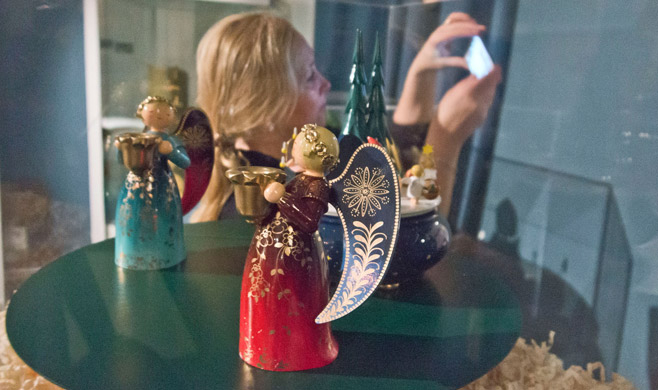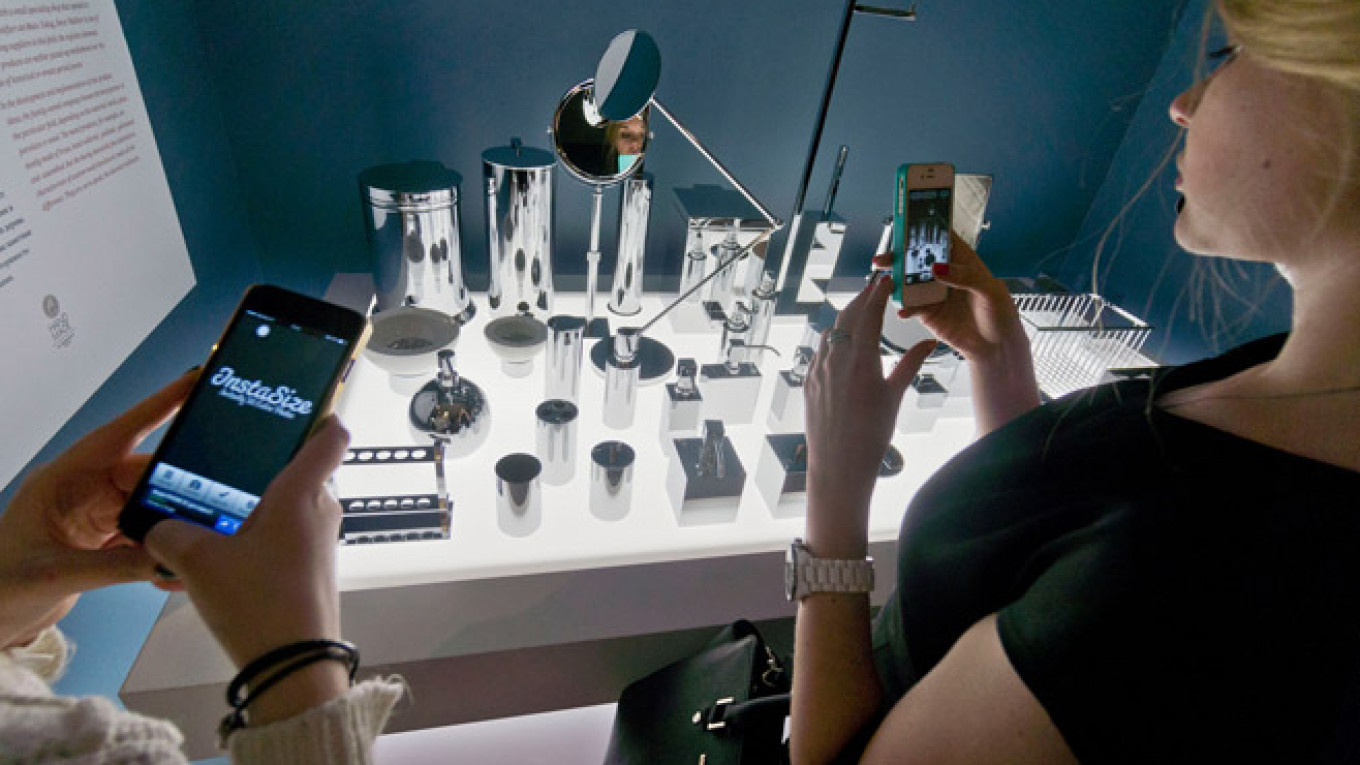An impressively large bottle of single malt whiskey greets visitors, followed by an unusually shaped beer bottle and a pale ale that you have probably not tasted before. This is not a bar, but the Museum of Applied, Decorative and Folk Art, and an exhibit devoted to German design.
The whiskey bottle does not hail from Scotland but from Hausbrauerei Altstadthof in Nuremberg, Germany, a craft brewery that branched out into the hard stuff. The beer, a Brauerei Clemens Harle light beer is from Upper Swabia and the bitter from a little-known German brewery
These drinks, which were offered to taste at the opening — and let's just say didn't completely convince anyone to give up on Scottish whiskey — are part of a random and fascinating assortment of over 100 different examples of German ingenuity, ranging from a collection of dolls made from rags, flax and florist's wire from Munich to beautifully crafted ceramic cookware from Lower Saxony.
"We have well-known brands and up-and-coming designers on display," said Pascal Johanssen, curator of the exhibition, who calls those behind the items on show manufacturers. "Despite the fact that the word 'manufacturer' might sound old-fashioned, they have succeeded in creating something new. It is the philosophy of the 21st century to have regional strength."
Each item comes with carefully written explanations in English and Russian. Did you know that accordions from the Saxony region are comprised of 2,500 individual parts?

Dolls and alcohol are all on show.
"Craftsmanship is turning fashionable again. People are tired of mass production and are looking for unique things," said Johanssen.
The items on show range from the delicately crafted porcelain of Berlin's Royal Porcelain Factory, which dates back to the 1700s, to handmade watches made by Lang & Heyne, which was founded in 2001.
"We have been trying to find something from each section of German culture. Food, alcohol, furniture, porcelain, watches and glasses. There is a mixture of everything. We have almost every region of Germany on display here," said Frauke Ulrich, one of the directors of Handmade in Germany.
A number of the items on show, such as the German alcoholic drinks, handmade glassware and ceramic pots, can be picked up and examined — unlike most of the other stuff on show in the decorative arts museum.
"Handmade in Germany" will run until March 1 at the Museum of Applied, Decorative and Folk Art. 3 Delegatskaya Ulitsa. Metro Tsvetnoi Bulvar. Tel. 495-609-0146, www.vmdpni.ru.
Contact the author at artsreporter@imedia.ru
A Message from The Moscow Times:
Dear readers,
We are facing unprecedented challenges. Russia's Prosecutor General's Office has designated The Moscow Times as an "undesirable" organization, criminalizing our work and putting our staff at risk of prosecution. This follows our earlier unjust labeling as a "foreign agent."
These actions are direct attempts to silence independent journalism in Russia. The authorities claim our work "discredits the decisions of the Russian leadership." We see things differently: we strive to provide accurate, unbiased reporting on Russia.
We, the journalists of The Moscow Times, refuse to be silenced. But to continue our work, we need your help.
Your support, no matter how small, makes a world of difference. If you can, please support us monthly starting from just $2. It's quick to set up, and every contribution makes a significant impact.
By supporting The Moscow Times, you're defending open, independent journalism in the face of repression. Thank you for standing with us.
Remind me later.






